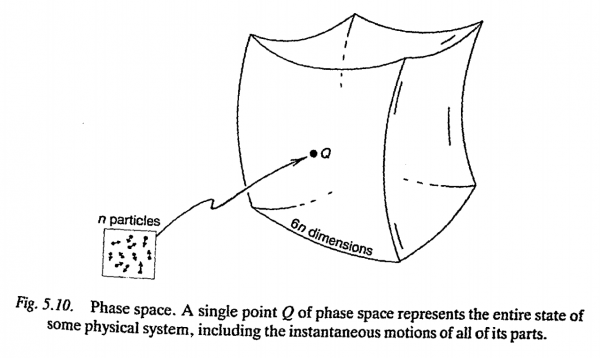Physics Lournal
Powered by 🌱Roam GardenHamiltonian Formalism
The Hamiltonian Formalism describes mechanic trajectories in phase-space (qualitative space), while Lagrangian Mechanics use trajectories in configuration-space.

A Phase Space is a mathematical tool that allows us to grasp important aspects of complicated systems.
Intuitive
The choice of variables (coordinates), can make a problem in mechanics much more tractable.
A lever can be modeled as as a near infinity of atoms, or as a lever arm, with one position coordinate (angle, zero), and the condition of rigidity (perhaps applied to the infinite atoms to generate the illusory solid).
Generally we assume the second to be more efficient, but Hamilton, realized the most sparse description is not always the best, and additional coordinates may yield different insights.
Hamilton brought in a doubling of number coordinates in any mechanics, but it’s important not to think of this as doubling of a number, i.e going from 5-10, but a doubling of dimensionality, as in going from children, to boys to girls.
This is an amazing analogy.
The further criteria, however, is that these two variables (boys and girls), must be dynamically related.
Hamiltons Allegory of The Course:
Consider the difference between these two situations.
On Saturday, we drive 100 balls of golf, and then go to the hole, and count up the number of balls we found there.
We count the number of balls after arrival here.
We can reconstruct the history of all of our driven balls here.
On Sunday, we don’t drive any balls, but we calculate the trajectory of a 100, given conditions of angle and speed, and determine whether or not the golf ball would land.
We calculate the trajectory of a given ball, and know where it arrives and when.
Here, we forego the ability to construct history, in exchange for a proportion corresponding to the number of arrivals.
These two results can be said to exist in different ‘spaces’.
Saturday, is phase-space, whereas Sunday is configuration-space.
phase-space allows us to obtain qualitative information, about more golfballs, in one go. Less from more.
Deduction in physics!
Concrete
One novel ingredient of the Hamiltonian lies in the variables one uses to describe a physical system.
Prior to this, the positions of particles were primary, and the velocities were simply the change of position as a function of time.
Recall that when specifying the initial state of a Newtonian system, we need the positions and velocities of all particles, in order that the subsequent behavior be determinate.
With the Hamiltonian, we select the momenta of the particles rather than velocity.
momenta is plural for momentum.
The momentum of a particle is
This seems a small change, but the position and momentum of each particle are treated as independent quantities, thus one assumes, at first, that the momenta of particles have nothing to do with the rates of change of their position variables.
In this formulation, we have now have two equations:
One equation that tells us how the momenta of particles change with time, and the other tells us how the positions change with time.
In each case, the rates of change are determined by the various values of the respective variables.
Roughly, the first set of Hamiltonian equations states Newton's second law, that the rate of change of momentum force, with the second set telling us what the momenta actually are, in terms of the velocities.
Rate of change of position